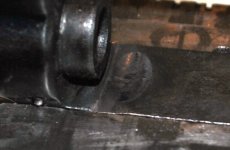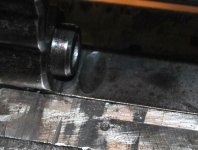Qmark
Member
I'm not a serious hard core S&W collector. I do how ever collect S&W shooters. Today at my gun club's meeting a member was selling what was tagged "hand ejector model" and it is chambered in 32/20. It was kind of love at first sight for me, I wanted to buy it but currently I'm being drained financially by a dentist. Told him I'd let him know at the meeting next month if I could afford the no guilt money. With over 6 G's spent at the dentist this year with more to come. My discretionary dollars and spending is limited. I have no interest in buying something I can't safely shoot.
One thing I noticed was the deep gas cutting, not the typical pitting but it almost looked like a chunk was removed. Is the heavy gas cutting common for revolvers chambered in 32/20? Were 32/20's doomed because of the heavy gas cutting same as the 357 Maxium? Or could it simply be that due to its age it has been shot hundreds of times?
Being a collector of shooters and not having one chambered in 32/20. If I do buy it first order of business will be searching for ammo as I will be anxious to get it to the range.
One thing I noticed was the deep gas cutting, not the typical pitting but it almost looked like a chunk was removed. Is the heavy gas cutting common for revolvers chambered in 32/20? Were 32/20's doomed because of the heavy gas cutting same as the 357 Maxium? Or could it simply be that due to its age it has been shot hundreds of times?
Being a collector of shooters and not having one chambered in 32/20. If I do buy it first order of business will be searching for ammo as I will be anxious to get it to the range.


